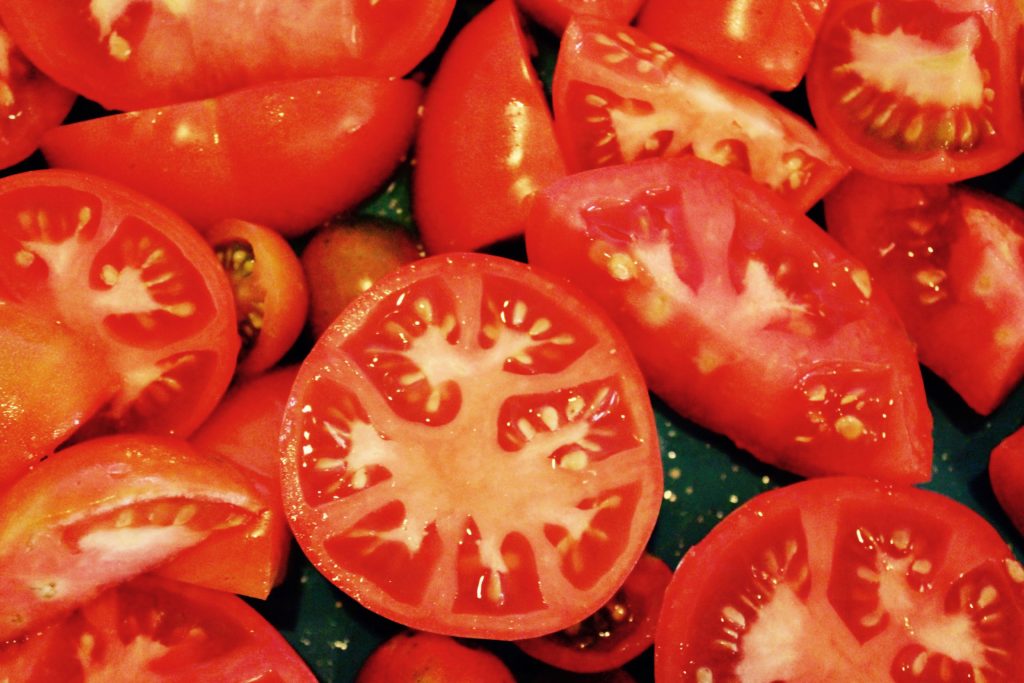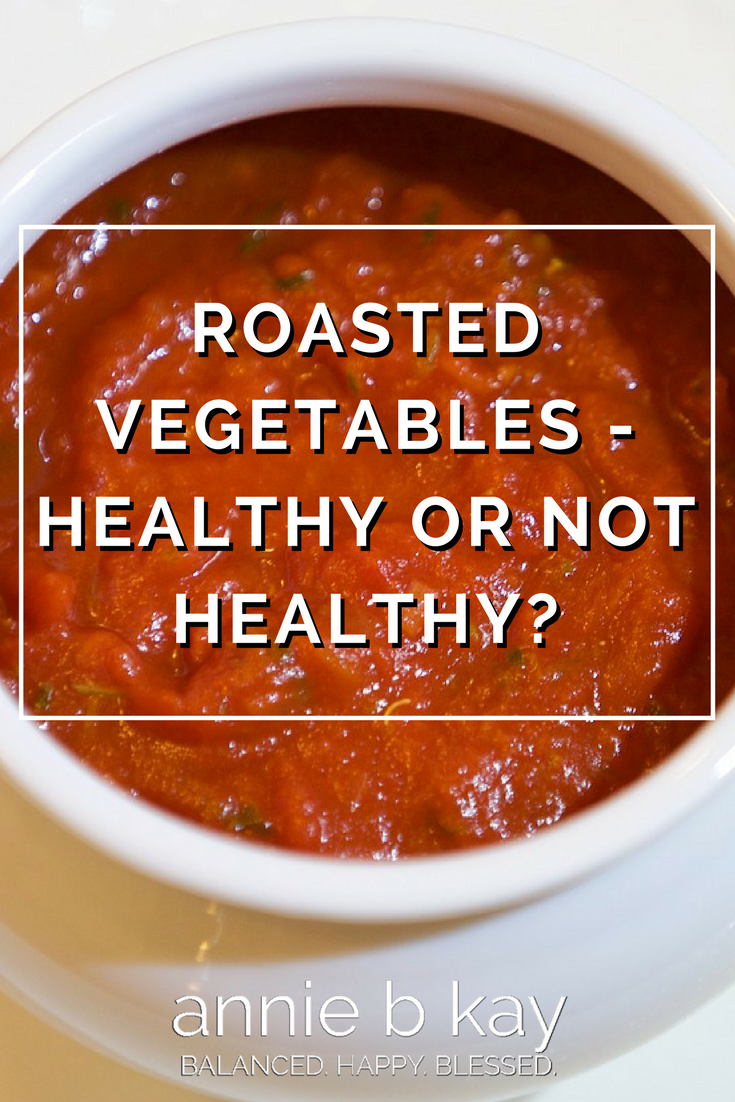Roasting vegetables – baking them with a drizzle of olive oil until they have a toasty color and flavor – is a mainstay of my fall and winter kitchen. I give my tomatoes and onions a light roast before pureeing them into soups and sauces and love the sweet roast flavor.
Is roasting vegetables a healthy way to eat them? There has been some attention to the downsides of charring meats and vegetables on the grill – is roasting in that category?
It depends. My favorite nutrition answer!
If you roast your vegetables to a deep crispy crunch, then well yes, you’re roasting the nutrients out and possibly creating some less-than-healthful new things that your liver will need to contend with. Too, if you are roasting over high heat – at 425F, for example, you will want to be aware of the type of oil you use. Unrefined oils, like some olive oils and certainly things like flax oil, have low smoke points, meaning that the oil begins to break down quickly at a fairly low temperature.
Here are a few tips for nutritious roasting:
- Choose a higher smoke point oil. Oils like grapeseed, lighter olive oils and refined oils have higher smoke points and won’t burn as easily. Coconut oil and ghee tend to be on the higher smoke-point end too.
- Consider lower-temp roasting. I find that roasting vegetables at 325F for 25-40 minutes gives as much roasting flavor as I ever desire. Then I can use my flavorful olive oils, there isn’t oil breakdown (you can sometimes tell by the smokiness – if you are using a low smoke point oil and use a higher roasting temp, that billow of smoke tells you that you are learning this lesson).
- Use your nose and common sense. Burned oils lose their nutritional benefits. If you enjoy roasting, go for it, but wean yourself off crispy charred vegetables, and enjoy the light toasting instead. Heat does destroy some nutrients. Some nutrients, however, are actually more available once they’ve been heated.
- Eat your vegetables prepared a variety of ways – steamed (greens), sautéed (onions and greens), roasted (tomatoes, root vegetables) and not cooked at all (avocados, carrots). That way you’ll enjoy a full range of flavor and the nutrition advantages of each method.
In the end, chef knows thyself. If you (like I) am one who knows two stovetop burner settings – high and off – then get to know this idea of the smoke point. If you put the pan on the stove, turn it to high, pour in the oil and wait until it smokes – get yourself a bottle of high-temp grapeseed oil.
Spectrum oil used to have a great chart of smoke points, but I see they no longer have it on their site. Here is one to take a look at, and here is another.
For my roasted tomato sauce, I roasted piles of tomatoes (rinsed, sliced and cored when woody), an onion and a head of garlic, all drizzled with olive oil, at 325F for 25 minutes. Then I squeezed the garlic cloves out of their husks and blended everything. I had the most delicious soupy sauce – with seeds! – that we will enjoy all winter!



